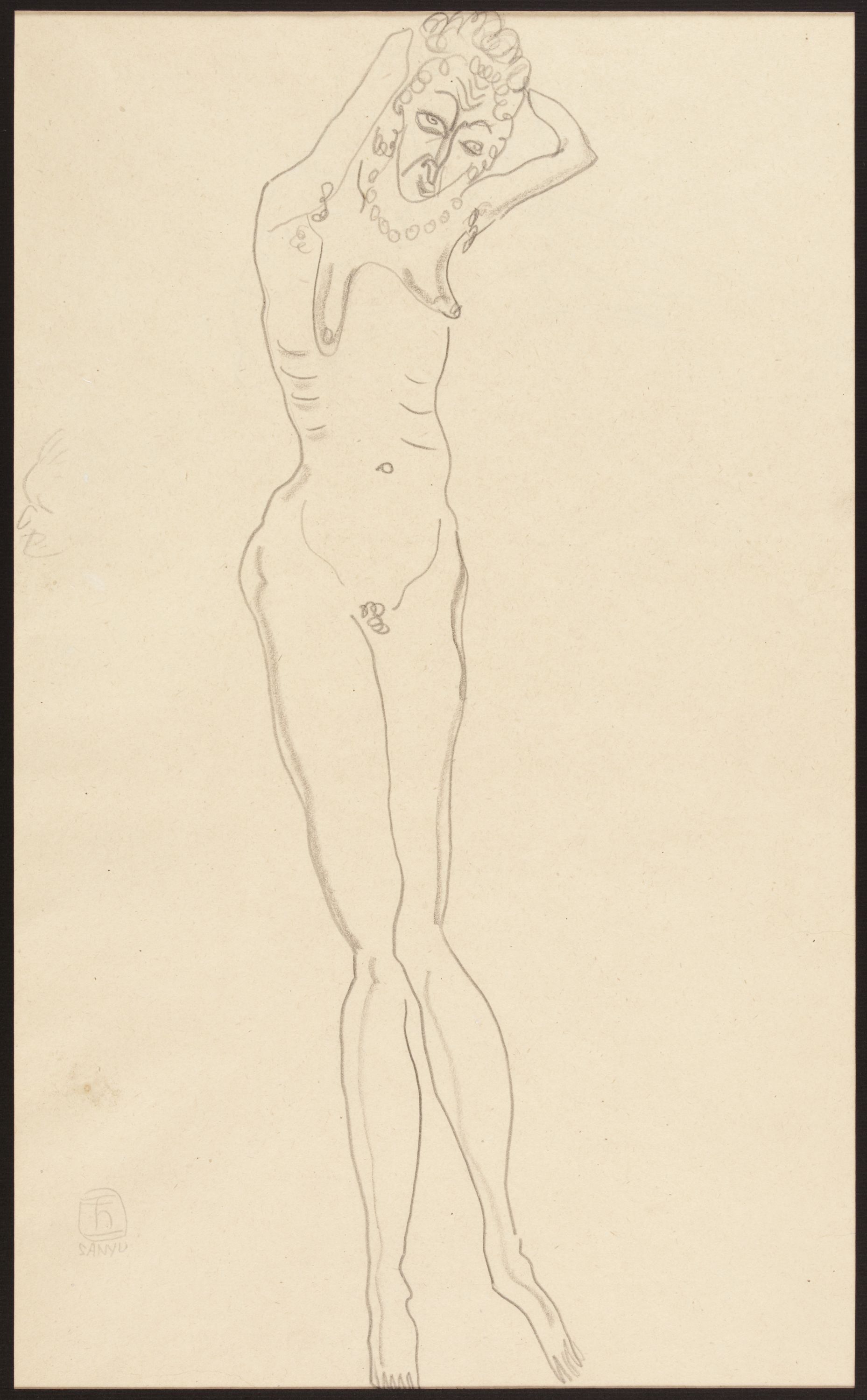
Nu debout
Papier, Crayon
Dessin
sceau dessiné "Yu"; Signature "sanyu"
Don manuel : Société des Amis du musée Cernuschi
M.C. 2010-6
Sanyu was born in Nanchong, Sichuan, into cultivated circles and a family whose prosperity had grown with modern industrialisation. From an early age, Sanyu turned his artistic aspirations towards the West. After a stay in Japan from 1918 to 1919, he travelled to Europe in 1921. He spent some time in Berlin, like his contemporaries Lin Fengmian and Xu Beihong, but it was in Paris that he chose to train, on the fringes of the official institutions. Pang Xunqin’s description of the Académie de la Grande Chaumière in the late 1920s shows how familiar Sanyu was with the studio, where he produced many of the ink drawings that would influence most of the young Chinese artists working in Paris at the time.
By around 1930, Sanyu’s work had absorbed the formal innovations of the avant-garde and was perfectly aligned with the Parisian artistic milieu. This was reflected in the special relationship he enjoyed, from 1921 to 1931, with the writer and art dealer Henri-Pierre Roché (1879-1959), who was close to Picabia (1879-1953), Duchamp (1887-1968) and Man Ray (1890-1976) among others. Despite several brief returns to China in 1926-27 and 1938, and a stay in New York from 1948 to 1950, Paris remained Sanyu’s working base until his death in 1966.
Sanyu’s receptiveness to the modern artistic currents went beyond the Paris art scene. This drawing of a skeletal nude, whose facial features are reduced to a caricature, almost a death mask, evokes German Expressionism, which Sanyu had discovered during his stay in Berlin in the early 1920s. This figure traced on the corner of a tablecloth, as Sanyu was in the habit of doing, bears similarities to three ink drawings of a slender figure. While all these works were probably inspired by a single model, comparison of their media shows the extent to which the use of ink enabled Sanyu to express his personal style, influencing Pang Xunqin, Zhang Xian and a whole generation of Chinese artists working in Paris.